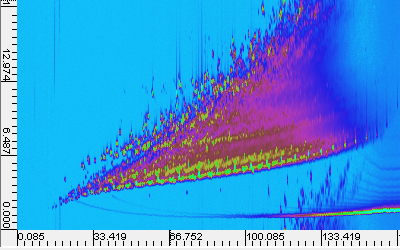The Process
The optimization of a GCxGC system requires a
complex approach since the separation in both columns is
differently and independently influenced by column
dimensions and stationary phases, temperature
programming and carrier gas flow rates. In GCxGC, the
columns of a set are combined in series and the
possibility to apply a close-to-optimal flow regime in
both GCxGC dimensions by columns with a conventional ID
is discussed (see Posters).
The combination of
homologous diameter columns, differing in stationary
phase and film thickness, was shown to enable each
chromatographic dimension to work with a close to the
optimal flow regime resulting in an improved phase
selectivity (confirmed by system orthogonality
estimation) that partially compensated the loss of
efficiency due to wider 2D ID.
A new open tubular
capillary column called DN-UNIQUE or MEGA-2D is coated
in series with different film thickness of two different
stationary phases in a single fused silica tubing. This
column improves GCxGC performance since it avoids the
use of unions (press-fits or low dead volume
connections) between the first and the second dimension
thus eliminating a possible source of leaks and reducing
band broadening effects.
Application Notes
| AN0142 | Essential Oils, Quantitative Profiling (GCx2GC-MS/FID) |
Posters, Presentations
| P004 | Gas Chromatography and GCxGC |
| P005 | Comprehensive two-dimensional GCxGC with conventional inner diameter columns: method development and flow regime optimization |
| P006 | Comprehensive two-dimensional GCxGC with conventional inner diameter columns: new column coated with two in series different stationary phases in a single fused silica tubing |
| P007 | A new column
coated with two in series different stationary
phases in a single fused silica tubing of conventional inner diameter for Comprehensive two-dimensional GCxGC |

 At
Weber Consulting we try to help our customers find the best GC products
for their application. If we do not have the solution - then we will
point you in the right direction.
At
Weber Consulting we try to help our customers find the best GC products
for their application. If we do not have the solution - then we will
point you in the right direction.